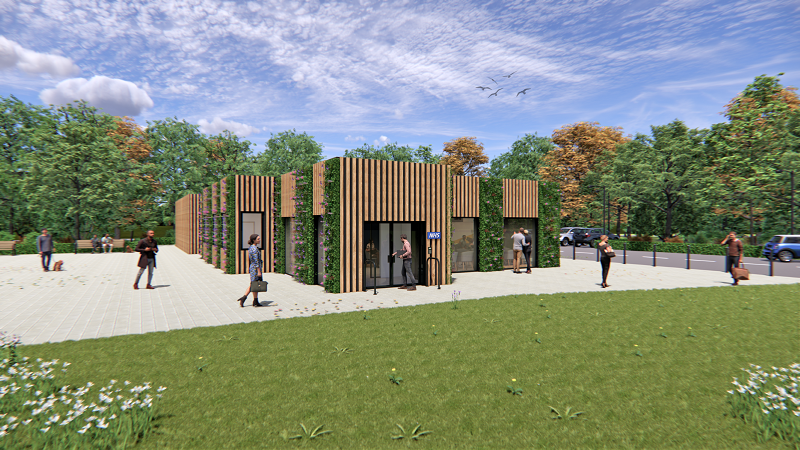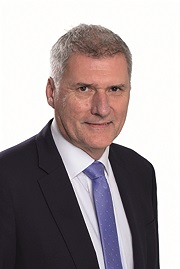Winter pressure strategies are now in full force and the UK healthcare service continues to battle the headwinds of catching up on pandemic-related backlogs, workforce shortages and burnouts, plus ever-growing patient waiting lists.
The advent of Community Diagnostic Centres (CDCs) can be applauded for its success in increasing the number of diagnostic imaging tests and scans accessible to patients over the last 12 months, addressing some of the challenges and delays associated with the COVID-era.
And this momentum seems set to continue, with a total of 160 CDCs promised by March 2025.
However, the conceptional aim of preventative health closer to the community still has some way to go.
The holy grail of CDCs would be to further the advancement of predictive health with early detection of disease, saving greatly on the economic burden over the long term.
For example, when wellness can be prescribed through lifestyle changes such as sport or diet, these changes can save time and money, rather than waiting for the grip of disease that may result in hospital stays, anaesthetics, surgical interventions, and ongoing medication.
Preventative health
The transformation of modern healthcare in these inclement times goes further than increasing capacity of services and numbers of imaging systems inside the NHS; it also requires strategic consideration of how to innovate the deployment of healthcare human resources, healthcare buildings, and working further towards preventative health.
Let’s talk technology first.
Since the arrival of Artificial Intelligence (AI), replacing people has never been the objective.
Clinicians and care givers are the beating heart of our health service, and the innovation of technology solutions is to power productivity so that healthcare professionals can spend more quality time with their patients or help to expand specialist clinical services.
The holy grail of CDCs would be to further the advancement of predictive health with early detection of disease, saving greatly on the economic burden over the long term
In recent times, AI for healthcare has become big news, promising a reduction in error rates to automate processes and diagnostic decisions.
It also heralds an opportunity to assist with routine tasks to alleviate bottlenecks and burnouts.
Remote imaging command centres – connecting multiple geographically-spread experts through advanced health IT to radiographers at various locations to provide real-time support over many procedures and extended hours – also looks to help with this.
And speeding up clinical decision making and treatment planning will further play a part in helping to overcome local resourcing challenges.
Quick to create and easy to deploy, diagnostic modular buildings that can ‘click together’ to flex up and down with capacity needs are a swift solution to delivering community diagnostics
Co-providing service delivery
Pressure on healthcare resourcing has been long predicted due to retirement rates in specialities such as radiology, and the replacement delays from long training timeframes for new recruits.
COVID has added to this workforce crisis with well-documented burnouts of NHS staff who had to just keep going through the darkest days.
Despite the introduction of new systems and strategies to catch up on the growing waiting lists, new community-based diagnostic centres cannot operate without people power.
Working with our industry partners, we’re also aiming to introduce fresh new ideas on staffing models in primary and secondary care, to work alongside the arrival of new CT or MRI scanners and operating CDCs.
This collaborative approach is about working with the NHS to improve productivity by creating a rich talent pool, not poaching valuable staff members, and build back resilience in existing people by creating flexible roles and training new individuals for the future.
Unique times call for unique and hybrid delivery models.
Healthcare facilities to flex up and down
The location of community-based healthcare diagnostics, away from the hospital estate, needs to be answered.
Unused retail or business units have been an option in our metamorphosing town centres. However surveying, planning, and building bricks and mortar options creates delays of up to two years and increases cost implications.
This collaborative approach is about working with the NHS to improve productivity by creating a rich talent pool, not poaching valuable staff members, and build back resilience by creating flexible roles and training new individuals for the future
Quick-to-create and easy-to-deploy diagnostic modular buildings that can ‘click-together’ to flex up and down with capacity needs are a swifter and more-economical solution.

This concept isn’t new to us, it is how we deployed our NHS COVID response scanner units in just 12 weeks from order and build to delivery, creating more-flexible capacity and further space to solve COVID-clean patient pathways during the height of the pandemic.
It is also the historical theory behind mobile scanning units, but these differ from the more-personalised patient experience promised by NHS CDC aims.
Quick-build modular options create greater flexibility than traditional new builds, remodelling works, or steps-up-into relocatable units.
The very nature of the clinical-grade modular buildings means they can be deployed and redeployed into areas that need them most.
They can be quickly clicked together and taken apart like building blocks to scale community centres across the standard, large, plus hub-and-spoke models of CDC delivery.
This aligns with patient population or postcode clinical capacity needs, meeting health equality objectives, while honouring NHS net-zero sustainability and carbon reduction aims.
Healthcare has never needed a more-agile approach.
And the four Ps of Productivity, Prevention, People, and Place should be the transformational aims.
